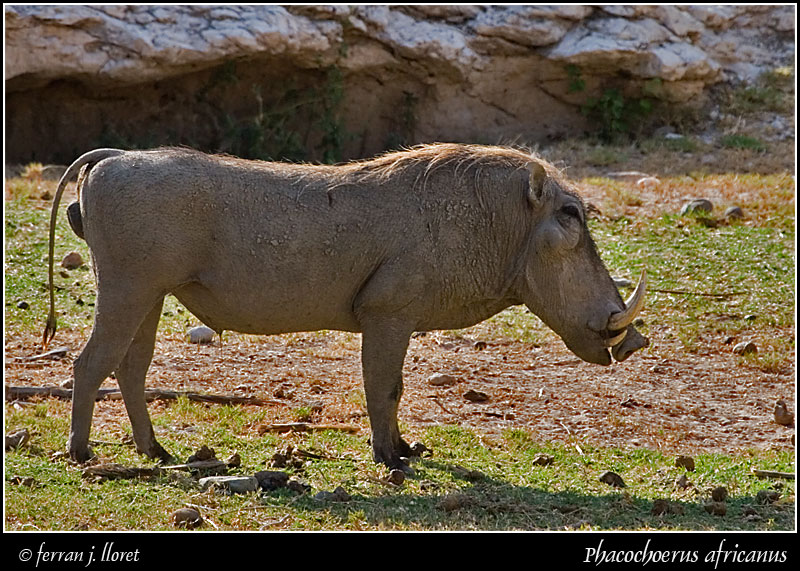The warthog (Phacochoerus africanus) is a wild member of the pig family
that lives in Africa. They are the only widely recognised species in
their genus, though some authors divide them into two species. On that
classification, P. africanus is the Common (or Northern) Warthog and P.
aethiopicus is the Desert Warthog, also known as the Cape Warthog or
Somali Warthog. The name comes from the four large warts found on the
head of the warthog, which serve the purpose of defense when males
fight.
Warthogs are identifiable by the two pairs of tusks protruding from their mouth, which are used as weapons against predators. Warthogs range in size from 0.9 to 1.5 metres (2.9-4.9 feet) in length and 50 to 150 kg (110-330 pounds) in weight.
Although warthogs are commonly seen in (and associated with) open grasslands, they will also seek shelter and forage in denser vegetation. In fact, warthogs prefer to forage in dense, moist areas when available. The common warthog diet is omnivorous, composed of grasses, roots, berries and other fruits, bark, fungi, eggs, dead animals, and even small mammals, reptiles and birds. The diet is seasonably variable, depending on availability of different food items. Areas with many bulbs, rhizomes and nutritious roots can support large numbers of warthogs. Warthogs are powerful diggers, using both heads and feet. Although they can dig their own burrows, they commonly occupy abandoned aardvark burrows. The warthog commonly enters burrows "back-end first", with the head always facing the opening and ready to burst out as needed.
Warthogs are very fast runners and quite capable jumpers. They will often run with their tail in the air. Despite poor eyesight, warthogs have a good sense of smell, which they use for locating food, detecting predators and recognizing other animals.
Information source
IUCN Information
Photographed in dry grassland of the Samburu National Reserve, Juliol de 2006.
|
